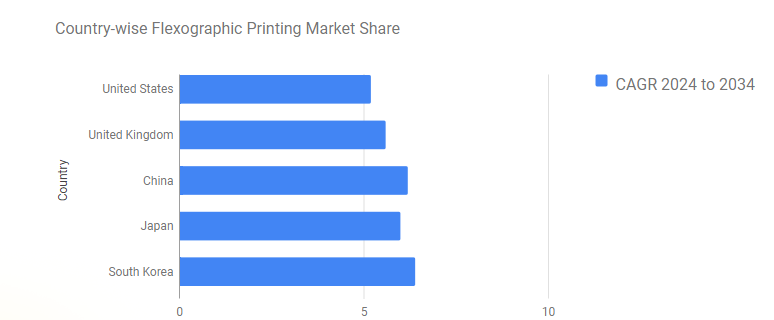Flexographic printing, often abbreviated as flexo, is a versatile and cost-effective printing technology widely used across various industries. Imagine the vibrant packaging on your favorite cereal box or the crisp labels on a water bottle – these are prime examples of flexo printing in action. Driven by its adaptability to diverse materials and its role in sustainable packaging solutions, the Flexographic Printing Market is experiencing significant growth. Let’s explore the compelling applications of flexo printing and delve into the exciting trends shaping this dynamic market.
Applications of Flexographic Printing
Flexographic printing presses utilize flexible printing plates and liquid inks to create high-quality images on a vast array of materials:
- Packaging: Flexo printing dominates the packaging industry, adorning everything from corrugated cardboard boxes and flexible pouches to food wrappers and beverage labels. Its ability to handle various substrates makes it ideal for creating eye-catching and informative packaging.
- Labels: From pressure-sensitive labels for product identification to durable labels for industrial applications, flexo printing offers a cost-effective solution for high-volume label production.
- Printed Electronics: As the world of printed electronics evolves, flexo printing is finding its place in creating flexible circuits and other electronic components on thin substrates.
- Non-Woven Materials: Flexo printing is used to create designs on non-woven materials like wallpaper, disposable wipes, and medical textiles.
Get Exclusive Sample Copy of the Report: https://www.futuremarketinsights.com/reports/sample/rep-gb-19099
A Market on the Rise: Growth Factors and Opportunities
The Flexographic Printing Market is experiencing a surge in popularity driven by several key trends:
- Sustainable Packaging: Consumers and businesses alike are prioritizing eco-friendly packaging solutions. Flexo printing is compatible with water-based inks and recyclable substrates, aligning well with sustainability goals.
- Rising Demand for Flexible Packaging: The growing popularity of flexible packaging due to its lightweight nature and convenience is driving the demand for flexo printing, which excels in this area.
- Advancements in Technology: Continuous advancements in flexographic printing presses offer improved print quality, faster printing speeds, and better automation capabilities, enhancing efficiency and productivity.
- Versatility and Cost-Effectiveness: Flexo printing’s ability to handle a wide range of materials and its cost-effective nature make it an attractive option for various printing applications.
- E-commerce Boom: The flourishing e-commerce sector necessitates high-quality printed packaging for product protection and branding. Flexo printing offers a reliable solution for meeting the demands of e-commerce fulfillment.
The flexographic printing market had an estimated market size of USD 8.5 billion in 2023 and is expected to reach a global market size of USD 14.7 billion by 2034, increasing at a CAGR of 5% between 2024 and 2034. By 2024, the market for flexographic printings is likely to reach a valuation of USD 9 billion.

Challenges and Considerations
The Flexographic Printing Market also faces some hurdles:
- Skilled Labor: Operating and maintaining complex flexographic printing presses requires specialized knowledge and skills. Investing in workforce development programs is crucial for the sustained growth of this market.
- Competition from Other Printing Technologies: Flexo printing faces competition from other printing methods like offset and digital printing. Staying at the forefront of technological advancements is essential for flexo to remain competitive.
- Maintaining Print Quality: Achieving consistent and high-quality print results requires expertise in press operation and material selection.
Get Full Report Now: https://www.futuremarketinsights.com/checkout/19099


